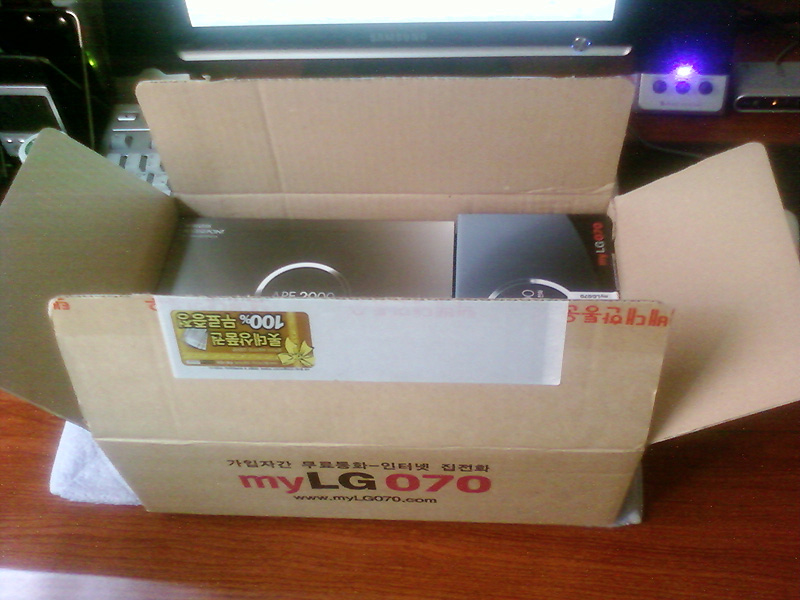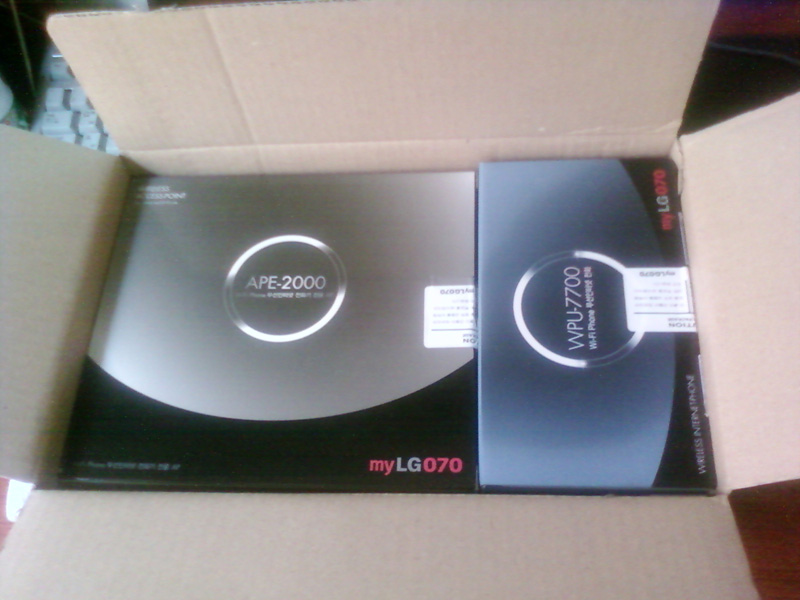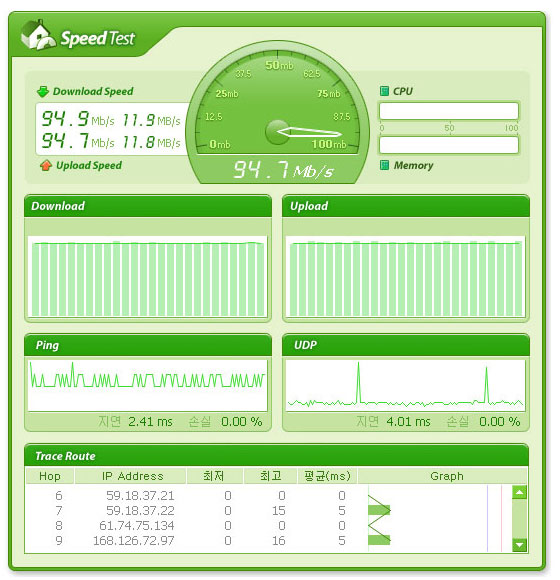부팅 로그
root@DD-WRT / $ dmesg
0
<7>[ 0.000000] On node 0 totalpages: 16384
<7>[ 0.000000] free_area_init_node: node 0, pgdat 8031dcb0, node_mem_map 81000000
<7>[ 0.000000] Normal zone: 128 pages used for memmap
<7>[ 0.000000] Normal zone: 0 pages reserved
<7>[ 0.000000] Normal zone: 16256 pages, LIFO batch:3
<7>[ 0.000000] pcpu-alloc: s0 r0 d32768 u32768 alloc=1*32768
<7>[ 0.000000] pcpu-alloc: [0] 0
<4>[ 0.000000] Built 1 zonelists in Zone order, mobility grouping on. Total pages: 16256
<5>[ 0.000000] Kernel command line: console=ttyS0,115200 root=1f02 rootfstype=squashfs noinitrd init=/sbin/init
<6>[ 0.000000] PID hash table entries: 256 (order: -2, 1024 bytes)
<6>[ 0.000000] Dentry cache hash table entries: 8192 (order: 3, 32768 bytes)
<6>[ 0.000000] Inode-cache hash table entries: 4096 (order: 2, 16384 bytes)
<4>[ 0.000000] Primary instruction cache 64kB, VIPT, 4-way, linesize 32 bytes.
<4>[ 0.000000] Primary data cache 32kB, 4-way, VIPT, cache aliases, linesize 32 bytes
<6>[ 0.000000] Writing ErrCtl register=00000000
<6>[ 0.000000] Readback ErrCtl register=00000000
<6>[ 0.000000] Memory: 61304k/65536k available (2336k kernel code, 4232k reserved, 848k data, 164k init, 0k highmem)
<6>[ 0.000000] NR_IRQS:80
<6>[ 0.000000] Calibrating delay loop... 265.42 BogoMIPS (lpj=1327104)
<6>[ 0.080000] pid_max: default: 32768 minimum: 301
<6>[ 0.080000] Mount-cache hash table entries: 512
<6>[ 0.090000] NET: Registered protocol family 16
<6>[ 0.090000] found calibration data for slot 0 on 0xBF051000
<4>[ 0.300000] registering PCI controller with io_map_base unset
<6>[ 0.320000] bio: create slab <bio-0> at 0
<6>[ 0.320000] usbcore: registered new interface driver usbfs
<6>[ 0.330000] usbcore: registered new interface driver hub
<6>[ 0.330000] usbcore: registered new device driver usb
<7>[ 0.340000] pci 0000:00:00.0: [168c:ff1c] type 0 class 0x000200
<6>[ 0.340000] pci 0000:00:00.0: fixup device configuration
<0>[ 0.340000] bootstrap returns device 168C:2A
<7>[ 0.350000] pci 0000:00:00.0: reg 10: [mem 0x00000000-0x0000ffff 64bit]
<7>[ 0.350000] pci 0000:00:00.0: supports D1
<7>[ 0.350000] pci 0000:00:00.0: PME# supported from D0 D1 D3hot
<7>[ 0.350000] pci 0000:00:00.0: PME# disabled
<6>[ 0.350000] pci 0000:00:00.0: BAR 0: assigned [mem 0x10000000-0x1000ffff 64bit]
<6>[ 0.350000] pci 0000:00:00.0: BAR 0: set to [mem 0x10000000-0x1000ffff 64bit] (PCI address [0x10000000-0x1000ffff])
<6>[ 0.360000] PCI: mapping irq 72 to pin1@0000:00:00.0
<6>[ 0.360000] Switching to clocksource MIPS
<6>[ 0.370000] NET: Registered protocol family 2
<6>[ 0.370000] IP route cache hash table entries: 1024 (order: 0, 4096 bytes)
<6>[ 0.380000] TCP established hash table entries: 2048 (order: 2, 16384 bytes)
<6>[ 0.390000] TCP bind hash table entries: 2048 (order: 1, 8192 bytes)
<6>[ 0.390000] TCP: Hash tables configured (established 2048 bind 2048)
<6>[ 0.400000] TCP reno registered
<6>[ 0.400000] UDP hash table entries: 256 (order: 0, 4096 bytes)
<6>[ 0.410000] UDP-Lite hash table entries: 256 (order: 0, 4096 bytes)
<6>[ 0.420000] NET: Registered protocol family 1
<7>[ 0.420000] PCI: CLS 0 bytes, default 32
<5>[ 0.420000] gpio_proc: module loaded and /proc/gpio/ created
<5>[ 0.430000] wl0gpio_proc: module loaded and /proc/wl0gpio/ created
<6>[ 0.440000] squashfs: version 3.0 (2006/03/15) Phillip Lougher
<6>[ 0.440000] msgmni has been set to 119
<6>[ 0.450000] alg: No test for stdrng (krng)
<6>[ 0.450000] io scheduler noop registered
<6>[ 0.460000] io scheduler deadline registered (default)
<6>[ 0.460000] Serial: 8250/16550 driver, 1 ports, IRQ sharing disabled
<6>[ 0.490000] serial8250.0: ttyS0 at MMIO 0x18020000 (irq = 11) is a 16550A
<6>[ 0.500000] console [ttyS0] enabled, bootconsole disabled
<4>[ 0.510000] check spi banks 2
<4>[ 0.510000] 0000 : C2 20 18
<4>[ 0.510000] found MX25L128-45E device on bank#0
<4>[ 0.520000] 0000 : C2 20 18
<4>[ 0.520000] found MX25L128-45E device on bank#1
<4>[ 0.530000] SPI flash size total:32 Mbytes
<0>[ 0.610000]
<0>[ 0.610000] found squashfs at 17F000
<5>[ 0.610000] Creating 9 MTD partitions on "ar7240-nor0":
<5>[ 0.620000] 0x000000000000-0x000000050000 : "RedBoot"
<5>[ 0.620000] 0x000000060000-0x000001fe0000 : "linux"
<5>[ 0.630000] 0x00000017f000-0x000000fb0000 : "rootfs"
<4>[ 0.640000] mtd: partition "rootfs" must either start or end on erase block boundary or be smaller than an erase block -- forcing read-only
<5>[ 0.650000] mtd: partition "rootfs" set to be root filesystem
<5>[ 0.660000] 0x000000fb0000-0x000001fe0000 : "ddwrt"
<5>[ 0.660000] 0x000001fe0000-0x000001ff0000 : "nvram"
<5>[ 0.670000] 0x000001ff0000-0x000002000000 : "FIS directory"
<5>[ 0.680000] 0x000001ff0000-0x000002000000 : "board_config"
<5>[ 0.680000] 0x000000000000-0x000002000000 : "fullflash"
<5>[ 0.690000] 0x000000040000-0x000000050000 : "uboot-env"
<6>[ 0.700000] tun: Universal TUN/TAP device driver, 1.6
<6>[ 0.700000] tun: (C) 1999-2004 Max Krasnyansky <maxk@qualcomm.com>
<7>[ 0.710000] ar71xx: pll_reg 0xb805002c: 0x62000000
<6>[ 0.930000] ag71xx_mdio: probed
<6>[ 1.130000] eth0: Atheros AG71xx at 0xb9000000, irq 4
<6>[ 1.900000] eth0: AR8316 switch driver attached.
<6>[ 1.920000] ar8316: Using port 4 as switch port
<7>[ 2.880000] eth0: connected to PHY at ag71xx-mdio.0:00 [uid=004dd041, driver=Atheros AR8216/AR8316/AR8326]
<6>[ 2.880000] PPP generic driver version 2.4.2
<6>[ 2.880000] PPP BSD Compression module registered
<6>[ 2.880000] PPP Deflate Compression module registered
<6>[ 2.890000] PPP MPPE Compression module registered
<6>[ 2.900000] NET: Registered protocol family 24
<6>[ 2.900000] Software Watchdog Timer: 0.07 initialized. soft_noboot=0 soft_margin=60 sec soft_panic=0 (nowayout= 0)
<7>[ 2.910000] Registered led device: generic_0
<7>[ 2.910000] Registered led device: generic_1
<7>[ 2.910000] Registered led device: generic_2
<7>[ 2.910000] Registered led device: generic_3
<7>[ 2.910000] Registered led device: generic_4
<7>[ 2.910000] Registered led device: generic_5
<7>[ 2.910000] Registered led device: generic_6
<7>[ 2.910000] Registered led device: generic_7
<7>[ 2.910000] Registered led device: generic_8
<7>[ 2.910000] Registered led device: generic_9
<7>[ 2.910000] Registered led device: generic_10
<7>[ 2.920000] Registered led device: generic_11
<7>[ 2.920000] Registered led device: generic_12
<7>[ 2.920000] Registered led device: generic_13
<7>[ 2.920000] Registered led device: generic_14
<7>[ 2.920000] Registered led device: generic_15
<7>[ 2.920000] Registered led device: generic_16
<7>[ 2.920000] Registered led device: generic_17
<7>[ 2.920000] Registered led device: generic_18
<7>[ 2.920000] Registered led device: generic_19
<7>[ 2.920000] Registered led device: generic_20
<7>[ 2.920000] Registered led device: generic_21
<7>[ 2.920000] Registered led device: generic_22
<7>[ 2.920000] Registered led device: generic_23
<7>[ 2.920000] Registered led device: generic_24
<7>[ 2.920000] Registered led device: generic_25
<7>[ 2.920000] Registered led device: generic_26
<7>[ 2.920000] Registered led device: generic_27
<7>[ 2.920000] Registered led device: generic_28
<7>[ 2.920000] Registered led device: generic_29
<7>[ 2.920000] Registered led device: generic_30
<7>[ 2.920000] Registered led device: generic_31
<7>[ 2.920000] Registered led device: wireless_generic_0
<7>[ 2.920000] Registered led device: wireless_generic_1
<7>[ 2.920000] Registered led device: wireless_generic_2
<7>[ 2.920000] Registered led device: wireless_generic_3
<7>[ 2.920000] Registered led device: wireless_generic_4
<7>[ 2.920000] Registered led device: wireless_generic_5
<7>[ 2.920000] Registered led device: wireless_generic_6
<7>[ 2.920000] Registered led device: wireless_generic_7
<7>[ 2.920000] Registered led device: wireless_generic_8
<7>[ 2.930000] Registered led device: wireless_generic_9
<7>[ 2.930000] Registered led device: wireless_generic_10
<7>[ 2.930000] Registered led device: wireless_generic_11
<7>[ 2.930000] Registered led device: wireless_generic_12
<7>[ 2.930000] Registered led device: wireless_generic_13
<7>[ 2.930000] Registered led device: wireless_generic_14
<7>[ 2.930000] Registered led device: wireless_generic_15
<6>[ 2.930000] u32 classifier
<6>[ 2.930000] input device check on
<6>[ 2.930000] Actions configured
<6>[ 2.940000] Netfilter messages via NETLINK v0.30.
<6>[ 2.940000] nf_conntrack version 0.5.0 (957 buckets, 3828 max)
<4>[ 2.950000] nf_conntrack_rtsp v0.6.21 loading
<4>[ 2.950000] nf_nat_rtsp v0.6.21 loading
<6>[ 2.960000] ip_tables: (C) 2000-2006 Netfilter Core Team
<6>[ 2.960000] IPP2P v0.8.2 loading
<6>[ 2.970000] TCP westwood registered
<6>[ 2.970000] TCP hybla registered
<6>[ 2.970000] TCP vegas registered
<6>[ 2.980000] NET: Registered protocol family 17
<6>[ 2.980000] 8021q: 802.1Q VLAN Support v1.8
<6>[ 2.990000] searching for nvram
<6>[ 2.990000] nvram size = -2144523470
<6>[ 3.070000] VFS: Mounted root (squashfs filesystem) readonly on device 31:2.
<6>[ 3.080000] Freeing unused kernel memory: 164k freed
<6>[ 8.140000] Compat-wireless backport release: compat-wireless-2012-02-23-9-g3e5b1f0
<6>[ 8.140000] Backport based on wireless-testing.git master-2012-02-27
<6>[ 8.310000] cfg80211: Calling CRDA to update world regulatory domain
<6>[ 8.630000] cfg80211: World regulatory domain updated:
<6>[ 8.640000] cfg80211: (start_freq - end_freq @ bandwidth), (max_antenna_gain, max_eirp)
<6>[ 8.640000] cfg80211: (2402000 KHz - 2472000 KHz @ 40000 KHz), (300 mBi, 2000 mBm)
<6>[ 8.650000] cfg80211: (2457000 KHz - 2482000 KHz @ 20000 KHz), (300 mBi, 2000 mBm)
<6>[ 8.660000] cfg80211: (2474000 KHz - 2494000 KHz @ 20000 KHz), (300 mBi, 2000 mBm)
<6>[ 8.670000] cfg80211: (5170000 KHz - 5250000 KHz @ 40000 KHz), (300 mBi, 2000 mBm)
<6>[ 8.680000] cfg80211: (5735000 KHz - 5835000 KHz @ 40000 KHz), (300 mBi, 2000 mBm)
<7>[ 8.910000] PCI: Setting latency timer of device 0000:00:00.0 to 64
<7>[ 8.920000] ath: EEPROM regdomain: 0x0
<7>[ 8.920000] ath: EEPROM indicates default country code should be used
<7>[ 8.920000] ath: doing EEPROM country->regdmn map search
<7>[ 8.920000] ath: country maps to regdmn code: 0x3a
<7>[ 8.920000] ath: Country alpha2 being used: US
<7>[ 8.920000] ath: Regpair used: 0x3a
<7>[ 8.920000] ieee80211 phy0: Selected rate control algorithm 'minstrel_ht'
<7>[ 8.920000] Registered led device: ath9k-phy0
<6>[ 8.920000] ieee80211 phy0: Atheros AR9280 Rev:2 mem=0xb0000000, irq=72
<6>[ 8.930000] cfg80211: Calling CRDA for country: US
<6>[ 8.950000] eth0: link up (1000Mbps/Full duplex)
<6>[ 9.110000] cfg80211: Regulatory domain changed to country: US
<6>[ 9.120000] cfg80211: (start_freq - end_freq @ bandwidth), (max_antenna_gain, max_eirp)
<6>[ 9.120000] cfg80211: (2402000 KHz - 2472000 KHz @ 40000 KHz), (300 mBi, 2700 mBm)
<6>[ 9.130000] cfg80211: (5170000 KHz - 5250000 KHz @ 40000 KHz), (300 mBi, 1700 mBm)
<6>[ 9.140000] cfg80211: (5250000 KHz - 5330000 KHz @ 40000 KHz), (300 mBi, 2000 mBm)
<6>[ 9.150000] cfg80211: (5490000 KHz - 5600000 KHz @ 40000 KHz), (300 mBi, 2000 mBm)
<6>[ 9.160000] cfg80211: (5650000 KHz - 5710000 KHz @ 40000 KHz), (300 mBi, 2000 mBm)
<6>[ 9.160000] cfg80211: (5735000 KHz - 5835000 KHz @ 40000 KHz), (300 mBi, 3000 mBm)
<6>[ 9.370000] ehci_hcd: USB 2.0 'Enhanced' Host Controller (EHCI) Driver
<6>[ 9.440000] ar71xx-ehci ar71xx-ehci.0: Atheros AR91xx built-in EHCI controller
<6>[ 9.450000] ar71xx-ehci ar71xx-ehci.0: new USB bus registered, assigned bus number 1
<4>[ 9.450000] ehci_reset Intialize USB CONTROLLER in host mode: 3
<4>[ 9.460000] ehci_reset Port Status c000000
<6>[ 9.500000] ar71xx-ehci ar71xx-ehci.0: irq 3, io mem 0x1b000000
<6>[ 9.520000] ar71xx-ehci ar71xx-ehci.0: USB 2.0 started, EHCI 1.00
<0>[ 9.520000] switch USB LED Off
<6>[ 9.520000] hub 1-0:1.0: USB hub found
<6>[ 9.530000] hub 1-0:1.0: 1 port detected
<6>[ 9.660000] ohci_hcd: USB 1.1 'Open' Host Controller (OHCI) Driver
<5>[ 9.840000] SCSI subsystem initialized
<0>[ 9.950000] switch USB LED On
<6>[ 9.950000] usb 1-1: new high-speed USB device number 2 using ar71xx-ehci
<6>[ 10.090000] Initializing USB Mass Storage driver...
<6>[ 10.100000] usbcore: registered new interface driver usb-storage
<6>[ 10.100000] USB Mass Storage support registered.
<6>[ 10.140000] scsi0 : usb-storage 1-1:1.0
<6>[ 12.200000] device vlan1 entered promiscuous mode
<6>[ 12.200000] device eth0 entered promiscuous mode
<6>[ 12.230000] br0: port 1(vlan1) entering forwarding state
<6>[ 12.230000] br0: port 1(vlan1) entering forwarding state
<6>[ 12.320000] cfg80211: Calling CRDA to update world regulatory domain
<6>[ 12.350000] cfg80211: World regulatory domain updated:
<6>[ 12.350000] cfg80211: (start_freq - end_freq @ bandwidth), (max_antenna_gain, max_eirp)
<6>[ 12.360000] cfg80211: (2402000 KHz - 2472000 KHz @ 40000 KHz), (300 mBi, 2000 mBm)
<6>[ 12.370000] cfg80211: (2457000 KHz - 2482000 KHz @ 20000 KHz), (300 mBi, 2000 mBm)
<6>[ 12.380000] cfg80211: (2474000 KHz - 2494000 KHz @ 20000 KHz), (300 mBi, 2000 mBm)
<6>[ 12.390000] cfg80211: (5170000 KHz - 5250000 KHz @ 40000 KHz), (300 mBi, 2000 mBm)
<6>[ 12.390000] cfg80211: (5735000 KHz - 5835000 KHz @ 40000 KHz), (300 mBi, 2000 mBm)
<6>[ 12.400000] cfg80211: Calling CRDA for country: US
<6>[ 12.420000] cfg80211: Regulatory domain changed to country: US
<6>[ 12.430000] cfg80211: (start_freq - end_freq @ bandwidth), (max_antenna_gain, max_eirp)
<6>[ 12.440000] cfg80211: (2402000 KHz - 2472000 KHz @ 40000 KHz), (300 mBi, 2700 mBm)
<6>[ 12.450000] cfg80211: (5170000 KHz - 5250000 KHz @ 40000 KHz), (300 mBi, 1700 mBm)
<6>[ 12.450000] cfg80211: (5250000 KHz - 5330000 KHz @ 40000 KHz), (300 mBi, 2000 mBm)
<6>[ 12.460000] cfg80211: (5490000 KHz - 5600000 KHz @ 40000 KHz), (300 mBi, 2000 mBm)
<6>[ 12.470000] cfg80211: (5650000 KHz - 5710000 KHz @ 40000 KHz), (300 mBi, 2000 mBm)
<6>[ 12.480000] cfg80211: (5735000 KHz - 5835000 KHz @ 40000 KHz), (300 mBi, 3000 mBm)
<5>[ 19.680000] scsi 0:0:0:0: Direct-Access Seagate External SG12 PQ: 0 ANSI: 4
<5>[ 19.850000] sd 0:0:0:0: [sda] 3907029164 512-byte logical blocks: (2.00 TB/1.81 TiB)
<5>[ 19.850000] sd 0:0:0:0: [sda] Write Protect is off
<7>[ 19.860000] sd 0:0:0:0: [sda] Mode Sense: 1c 00 00 00
<6>[ 19.870000] device ath0 entered promiscuous mode
<6>[ 19.870000] br0: port 2(ath0) entering forwarding state
<6>[ 19.880000] br0: port 2(ath0) entering forwarding state
<5>[ 19.880000] sd 0:0:0:0: [sda] Write cache: enabled, read cache: enabled, doesn't support DPO or FUA
<6>[ 19.930000] sda: sda1
<5>[ 19.940000] sd 0:0:0:0: [sda] Attached SCSI disk
<3>[ 20.870000] EXT3-fs (sda1): error: unrecognized mount option "iocharset=utf8" or missing value
<3>[ 20.890000] EXT2-fs (sda1): error: couldn't mount because of unsupported optional features (4)
<6>[ 22.840000] device vlan2 entered promiscuous mode
<6>[ 22.850000] device vlan2 left promiscuous mode
<6>[ 22.960000] warning: `proftpd' uses 32-bit capabilities (legacy support in use)
<6>[ 27.280000] br0: port 1(vlan1) entering forwarding state
<6>[ 29.850000] kjournald starting. Commit interval 5 seconds
<4>[ 29.860000] EXT3-fs (sda1): warning: mounting unchecked fs, running e2fsck is recommended
<6>[ 29.880000] EXT3-fs (sda1): using internal journal
<6>[ 29.880000] EXT3-fs (sda1): recovery complete
<6>[ 29.900000] EXT3-fs (sda1): mounted filesystem with writeback data mode
<6>[ 34.000000] kjournald starting. Commit interval 5 seconds
<4>[ 34.020000] EXT3-fs (sda1): warning: mounting unchecked fs, running e2fsck is recommended
<6>[ 34.050000] EXT3-fs (sda1): using internal journal
<6>[ 34.060000] EXT3-fs (sda1): mounted filesystem with writeback data mode
<6>[ 34.920000] br0: port 2(ath0) entering forwarding state
마운트 상태
root@DD-WRT / $ mount
rootfs on / type rootfs (rw)
/dev/root on / type squashfs (ro,relatime)
proc on /proc type proc (rw,relatime)
sysfs on /sys type sysfs (rw,relatime)
debugfs on /sys/kernel/debug type debugfs (rw,relatime)
ramfs on /tmp type ramfs (rw,relatime)
none on /dev type tmpfs (rw,relatime,size=512k)
devpts on /dev/pts type devpts (rw,relatime,mode=600)
devpts on /proc/bus/usb type usbfs (rw,relatime)
/dev/sda1 on /tmp/mnt type ext3 (rw,noatime,errors=continue,barrier=1,data=writeback)
/dev/sda1 on /etc type ext3 (rw,noatime,errors=continue,barrier=1,data=writeback)
/dev/sda1 on /tmp/root type ext3 (rw,noatime,errors=continue,barrier=1,data=writeback)
/dev/sda1 on /opt type ext3 (rw,noatime,errors=continue,barrier=1,data=writeback)
하드 용량
root@DD-WRT / $ df -h
Filesystem Size Used Available Use% Mounted on
rootfs 14.3M 14.3M 0 100% /
/dev/root 14.3M 14.3M 0 100% /
none 512.0K 0 512.0K 0% /dev
/dev/sda1 1.8T 26.3G 1.6T 2% /tmp/mnt
/dev/sda1 1.8T 26.3G 1.6T 2% /etc
/dev/sda1 1.8T 26.3G 1.6T 2% /tmp/root
/dev/sda1 1.8T 26.3G 1.6T 2% /opt
프로세스 상태

DD-WRT 화면












